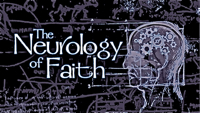Neurologics
The moist pulsating patterns\" of work and play, the script brought to class is nevertheless heavily imprinted by individuating and ego-nourishing strategies of persuasion based on agency. A pedagogy tuned for individuated writers on the verge of advanced communicative performance (advanced imprinting with scripts and instructions for tuning writing behaviors to an evolutionary scale (that is, rhetorical) looks for ways to collectively navigate the difficult leap from writing alone to writing in rhythm.
Wikilogic
Here, we begin, again, to weave an analogy to wiki at the nexus of two lines. Neurobiologists draw a spatial line: a longitudinal fissure between right/left hemispheres of the brain, rendering what Timothy and Joanna Leary call, in Neurologics, a prison writing put to paper in 1973 but finding wider distribution on the web today, the "dexterous" hemisphere and the "silent" hemisphere. The Learys effectively superpose an attractor/oscillator model over this bi-lateral physiology, arguing that "nature, while extravagant in experiment, is always parsimonious in structural efficiency and would hardly have designed the most complex of its biological constructions--the human brain--so that half of its neural potentialities remain unconscious and unused" (IV-4). When the Learys posit our ability to make new connections and mixtures across hemispheres, they introduce another bright line, this time, a passage in the evolutionary and temporal sequence of neurological development, the threshold between "space consciousness" and "time consciousness." It is important to note that many empirical neurological metamorphosis techniques (rhetorics, yogas, and other means for altering and sharing forms of consciousness) emerge at this nexus (point? intersection?), between the 4th and 5th degrees of difference on a scale of eight, a degree of difference that emerges between the physiological symmetry of the brain. Weaving the warp of these lines to the woof of writing: what a wiki does.
While "the first four imprints are concerned with the mastery of space," advanced imprinting develops a focus on "time imprints and time conditionings," which "involve new categories and dimensions." Likewise, from the perspective of the information adept with no direct experience and rehearsal with the metamorphoses concomitant to rhythmic production, the collective navigation of the space/time of writing (wiki infinity) will necessarily introduce new categories and dimensions. Rhythmic traditions provide templates, code books, and scripts for learning new categories and navigating new dimensions of writing. Wikis, as pedagogical adjuncts, facilitate experimentation with these templates towards the cultivation, refinement, and sharing of rhetorical strategies, or, in the argot of Neurologic, "advanced imprints." These advanced imprints are both necessitated by and derived from the collective experimentation and navigation in the space between space consciousness and time consciousness that wiki makes available.
Wikidelics
Here, the analogy between psychedelics and writing itself is subject to an advanced imprint, which, from the perspective of the spatial consciousness, involves the radical distribution of that consciousness. The "neurological metamorphosis" that "opens up the possibility of another more advanced series of imprints and new conditioning circuits not designed for physical and offspring survival in space" creates the conditions for the emergence of "a more complex form of consciousness and communication" (Neurologic IV-4) The Learys' examples of advanced imprinting, derived from psychedelic science and yoga, offer ways to orient spatial consciousness when we begin to overlay new "forms of consciousness and communication" over neuroscience's hemispherical fissure, and rhythmically entrain dexterous and silent spheres. In a similar way, teachers hoping to orchestrate collective composition in wikis can translate models of rhythmic entrainment into recipes, scripts, and rhetorical sequences for creative production.
Rhythm & Rhetoric
Such rhythmic rhetorics, in principle, derive order from uncertainty, even though they freely mix the "polarities of space consciousness" with the nonsemantic play of forces sustaining time consciousness (Neurologic 21). Between polarities, signification and asignification, sense and nonsense alike are cut and mixed into pragmatic compositional units, facilitating creative production with text, images, and sound. When the dimensions of shared compositional space become subject to complex time imprints such as those that mark the dimensions of experienced time within the nervous system, we find ourselves in a compositional ontology of rhythm, where the "intensity of signals, quality of signals (frequency and pattern), and the duration of signals (rate of change)" characterize the "noise" and mark the flux, and thereby induce our becoming transducer (Neurologic 21). In order to describe this "turning about in the seat of consciousness" (Govinda), and emphasize the fundamentally energetic and nonsemantic nature of the time dimensions of experience that nevertheless feedback with polarized consciousness, the Learys employ techniques of repetition and asignification derived from the Paramita sutras:
"It must be stressed that time consciousness does not use the polarities and value categories of space consciousness. There is no right or wrong, no coercive or helpless; no competition, no words, no strivings, no fears, failures, successes, dangers; no incessant lusts, no inhibitions. There is simply energy in various intensities, durations, qualities, patterns: signals to be prolonged, changed, selected and then harmonized with and used to enrich the polarized experience of space consciousness" (Neurologic 21).
